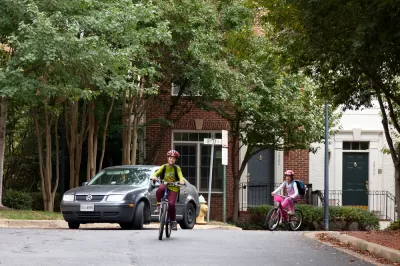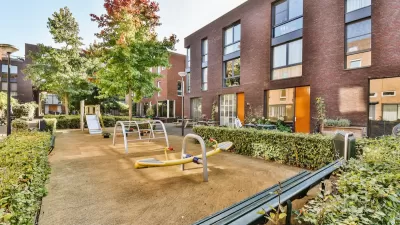Without children at the center of activity, the urban neighborhoods of today offer little compared to the ideals expressed by Jane Jacobs, according to this strongly worded critique of contemporary urbanism.

Benjamin Schwarz begins a critique of what he calls the Vibrant Urban Neighborhood with the following description of his subject: "its standard-issue bike shops and vintage clothiers, its 'authentic' live-work spaces and dive bars, its predictable purveyors of vinyl records and locally-sourced foodstuffs, its de rigueur venues for generically hip 'live music,' its uniform throngs of overwhelmingly unmarried and childless active or aspiring knowledge workers ritualistically intoning the shibboleth of 'diversity'…"
Instead of the renaissance many urbanists describe, the increasing popularity of Vibrant Urban Neighborhoods, or VUNs, "merely demonstrates that consumption and entertainment have become the dominant means of self-definition and of what passes for political expression—and, concomitantly, it signifies not the triumph of urban life but of our crabbed vision of the promise and potentialities of neighborhood and community."
To further describe where the urban renaissance has gone wrong, Schwartz compares contemporary urban neighborhoods to those extolled by Jane Jacobs. According to Schwartz, children are the component most lacking from contemporary neighborhoods. In fact, the bulk of the argument contained in the column is devoted to reframing the importance of children in some of Jacobs's most famous passages, and achieving an accurate comparison of the "urban villages" of her day with the VUNs of ours.
By discussing children, Schwartz also enters into an ongoing debate about the long-term appeal of urban environments to families as they age and grow. Planetizen blogger Michael Lewyn recently wrote about the complex demographic trends unfolding for families in and around cities. Other recent stories have lamented the lack of priority given to children in setting an urban agenda in Oakland, California, and provided statistical analysis of the U.S. cities with the most children.
FULL STORY: Cities Without Children

Planetizen Federal Action Tracker
A weekly monitor of how Trump’s orders and actions are impacting planners and planning in America.

Map: Where Senate Republicans Want to Sell Your Public Lands
For public land advocates, the Senate Republicans’ proposal to sell millions of acres of public land in the West is “the biggest fight of their careers.”

Restaurant Patios Were a Pandemic Win — Why Were They so Hard to Keep?
Social distancing requirements and changes in travel patterns prompted cities to pilot new uses for street and sidewalk space. Then it got complicated.

Platform Pilsner: Vancouver Transit Agency Releases... a Beer?
TransLink will receive a portion of every sale of the four-pack.

Toronto Weighs Cheaper Transit, Parking Hikes for Major Events
Special event rates would take effect during large festivals, sports games and concerts to ‘discourage driving, manage congestion and free up space for transit.”

Berlin to Consider Car-Free Zone Larger Than Manhattan
The area bound by the 22-mile Ringbahn would still allow 12 uses of a private automobile per year per person, and several other exemptions.
Urban Design for Planners 1: Software Tools
This six-course series explores essential urban design concepts using open source software and equips planners with the tools they need to participate fully in the urban design process.
Planning for Universal Design
Learn the tools for implementing Universal Design in planning regulations.
Heyer Gruel & Associates PA
JM Goldson LLC
Custer County Colorado
City of Camden Redevelopment Agency
City of Astoria
Transportation Research & Education Center (TREC) at Portland State University
Camden Redevelopment Agency
City of Claremont
Municipality of Princeton (NJ)





























